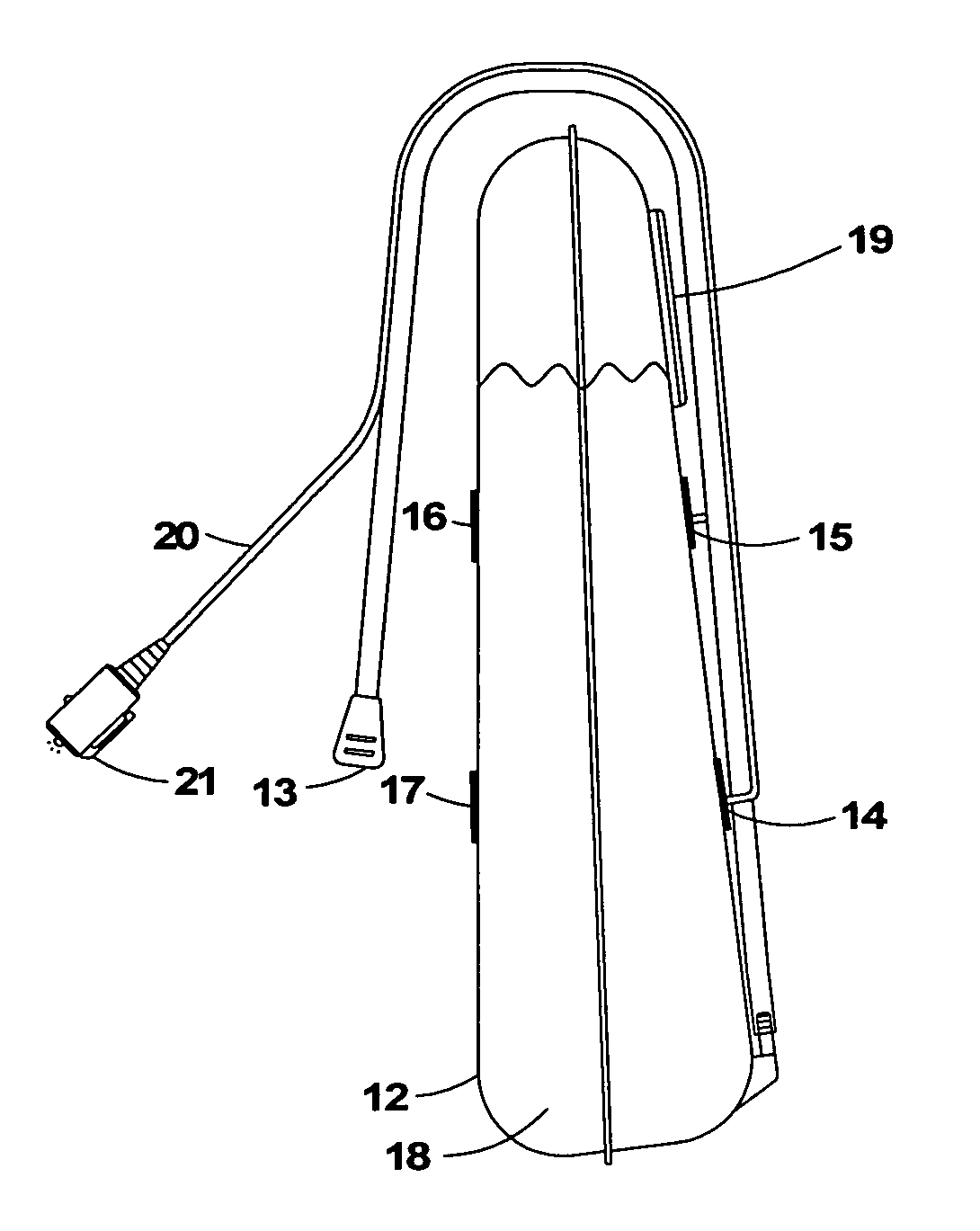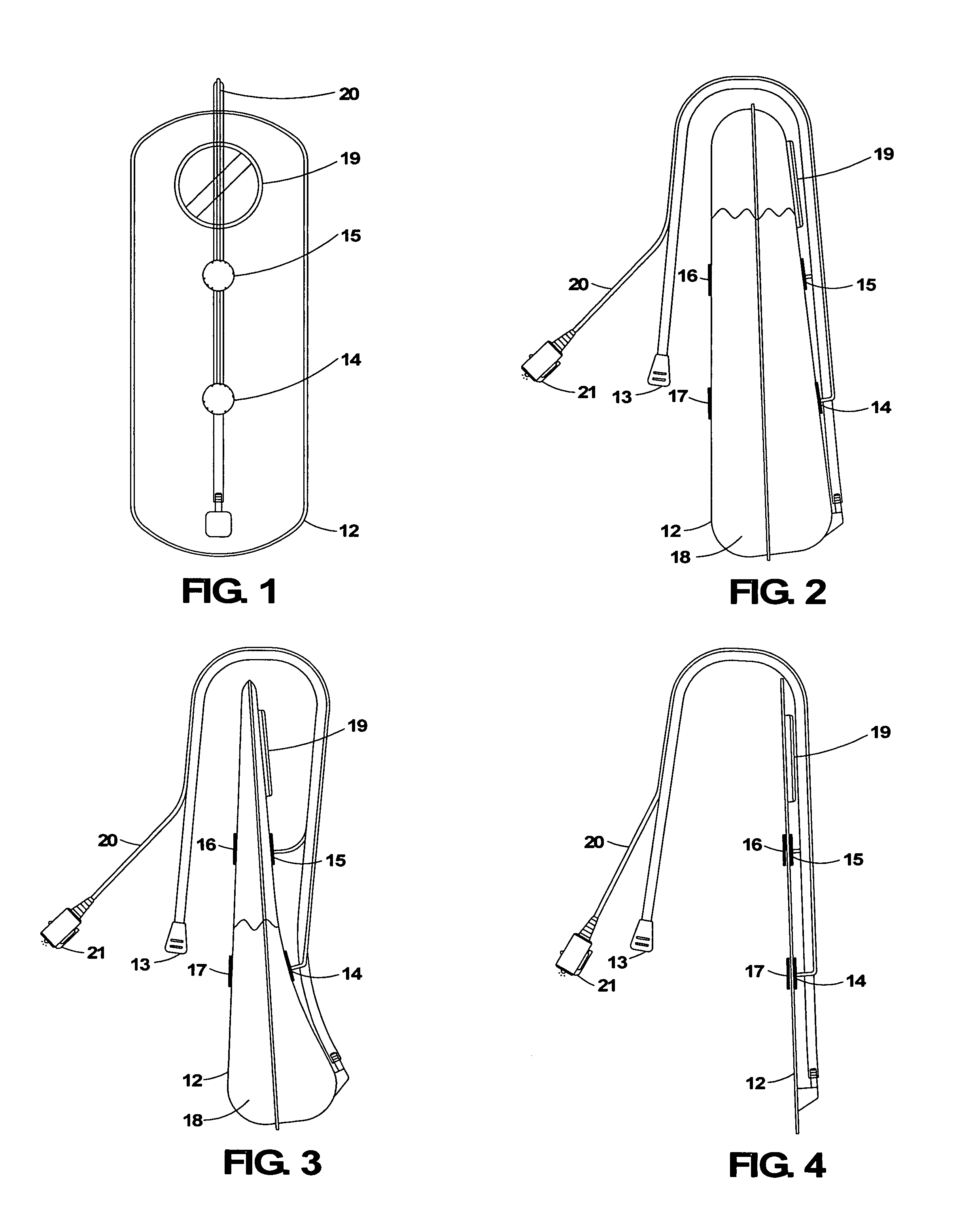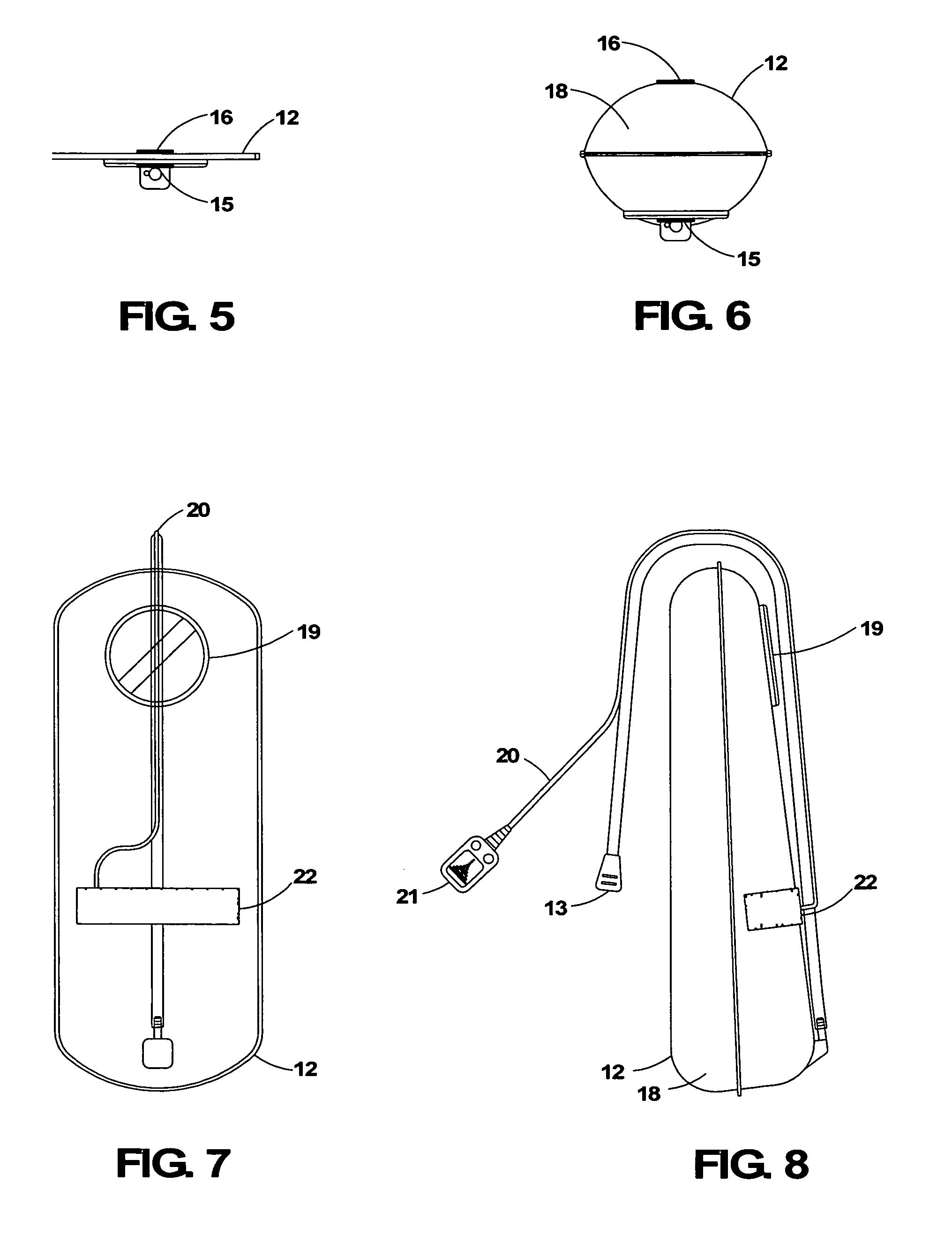Low fluid level indicator for hydration bladder
a technology of low fluid level and hydration bladder, which is applied in the direction of lighting and heating equipment, instruments, and domestic cooling equipment, etc., can solve the problems of limited water source availability, water system as compared to water bottles, and monitoring of fluid levels
- Summary
- Abstract
- Description
- Claims
- Application Information
AI Technical Summary
Benefits of technology
Problems solved by technology
Method used
Image
Examples
Embodiment Construction
—FIGS. 1, 2, 3, 4, 5, 6, 10, 11
[0042]A prior-art hydration bladder 12 (FIG. 1) with a mouthpiece and drinking tube 13 (FIG. 2) and filler cap 19 (FIG. 1). The bladder is typically constructed of flexible urethane material and has a generally rectangular shape has length and width dimensions of approximately 18 inches by 7 inches, depending on the designated fluid volume capacity. The bladder has lower and upper magnetically actuated reed switches 14 and 15 (FIG. 1) affixed to the exterior of one side of the bladder. Corresponding upper and lower magnets 16 and 17 (FIG. 2) are affixed on the exterior opposing side of the bladder, proximal to the reed switches. This arrangement provides two alert levels. One reed switch and one magnet may be used as well, for a single-alert level. The desired levels of alert, i.e., amount of remaining fluid 18 (FIG. 2) in the bladder upon alert, are determined by the placement of the reed switches and magnets. The amount of fluid remaining when the re...
PUM
 Login to View More
Login to View More Abstract
Description
Claims
Application Information
 Login to View More
Login to View More - R&D
- Intellectual Property
- Life Sciences
- Materials
- Tech Scout
- Unparalleled Data Quality
- Higher Quality Content
- 60% Fewer Hallucinations
Browse by: Latest US Patents, China's latest patents, Technical Efficacy Thesaurus, Application Domain, Technology Topic, Popular Technical Reports.
© 2025 PatSnap. All rights reserved.Legal|Privacy policy|Modern Slavery Act Transparency Statement|Sitemap|About US| Contact US: help@patsnap.com



